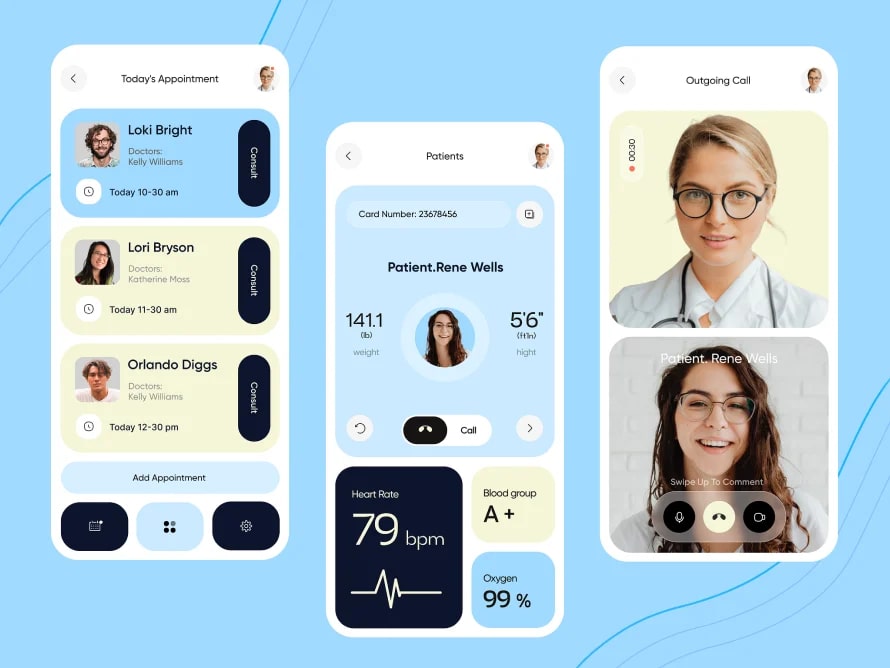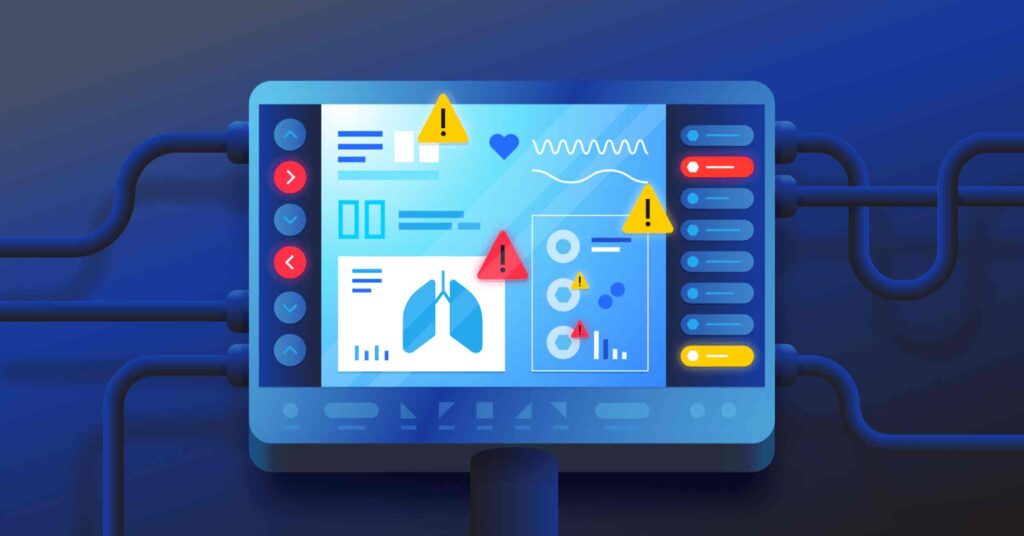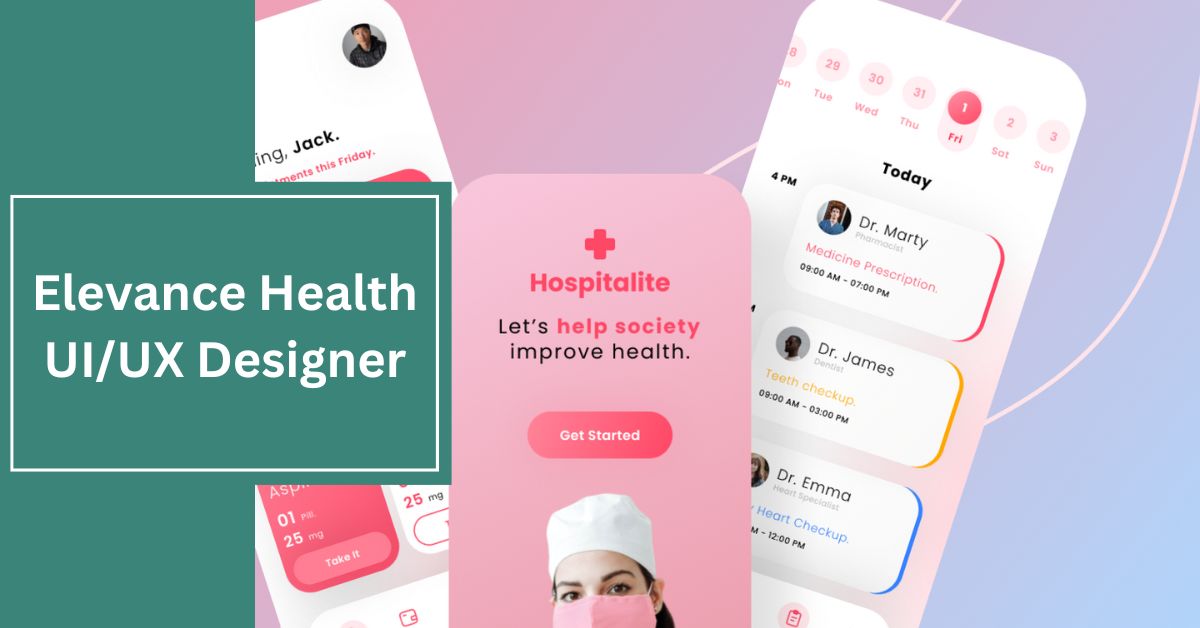In the ever-evolving landscape of digital healthcare, the role of an Elevance Health UI/UX Designer has become increasingly significant. This position is pivotal in shaping how users interact with healthcare services, ensuring that their experiences are seamless, intuitive, and user-friendly.
With a focus on usability and aesthetic appeal, Elevance Health’s UI/UX Designers play a crucial role in the organization’s commitment to enhancing patient engagement and satisfaction.
Responsibilities of an Elevance Health UI/UX Designer:
An Elevance Health UI/UX Designer is responsible for a variety of tasks that contribute to the overall success of digital products. These professionals engage in both System Integration Testing (SIT) and User Acceptance Testing (UAT), ensuring that every element of the design functions as intended.
The role involves testing, debugging, and troubleshooting web coding to guarantee that the product is deployable and functional. By actively reducing bugs and enhancing user interaction, the Elevance Health UI/UX Designer directly impacts the quality of healthcare delivery.
The Importance of User-Centered Design:
At the core of Elevance Health’s mission is a dedication to user-centered design. An Elevance Health UI/UX Designer employs research-driven methodologies to understand user needs and pain points.

This approach leads to the creation of web and mobile layouts that not only look good but are also practical and accessible. By prioritizing user experience, these designers help in developing products that cater to the diverse needs of patients and healthcare providers alike.
Collaborative Environment:
Collaboration is key in the role of an Elevance Health UI/UX Designer. Working alongside product managers, developers, and other stakeholders, designers ensure that their visions align with business objectives.
This team-oriented atmosphere fosters innovation and allows designers to explore new ideas and technologies. Such collaboration is essential for creating comprehensive design guidelines that define the visual identity of Elevance Health’s products.
Career Opportunities and Growth:
Elevance Health offers a robust career path for aspiring UI/UX Designers. With positions ranging from entry-level to senior roles, there are numerous opportunities for professional development. As the demand for skilled designers grows, Elevance Health is committed to providing resources and training to help their designers stay ahead in the field.
A recent job posting highlights the average salary range for a Senior UX Designer at Elevance Health, with estimates between $117K and $169K per year, reflecting the value placed on this essential role.
Insights from Current Designers:
Current Elevance Health UI/UX Designers have shared their experiences on platforms like LinkedIn and Indeed, revealing a supportive workplace culture that encourages growth and creativity.
Designers like Ashlee Barsky and Jeff Sykes emphasize the importance of results-driven leadership and a dynamic work environment that fosters collaboration. Such insights paint a positive picture of what it’s like to work at Elevance Health and highlight the organization’s commitment to excellence in design.
Tools and Technologies Used by Elevance Health UI/UX Designers:
An Elevance Health UI/UX Designer utilizes a variety of tools and technologies to create, prototype, and test designs. Proficient in industry-standard software such as Adobe XD, Figma, Sketch, and InVision, these designers can craft intuitive interfaces and develop interactive prototypes that simulate user interactions.
Additionally, they may employ design systems and component libraries to maintain consistency across multiple platforms and devices. Familiarity with HTML, CSS, and JavaScript is often beneficial, as it enables designers to collaborate effectively with developers during the implementation phase.
Staying updated on the latest design trends and emerging technologies is crucial, ensuring that Elevance Health’s digital products remain innovative and competitive in the marketplace.
Focus on Accessibility and Inclusivity:
An essential aspect of the Elevance Health UI/UX Designer role is the commitment to accessibility and inclusivity. Designers must adhere to established guidelines such as the Web Content Accessibility Guidelines (WCAG) to ensure that all users, regardless of their abilities, can access and navigate healthcare platforms effectively. This involves creating designs that accommodate various disabilities, such as visual impairments, hearing loss, and cognitive challenges.
By incorporating features like adjustable font sizes, high-contrast color schemes, and alternative text for images, Elevance Health UI/UX Designers help create an inclusive environment that fosters equitable access to healthcare resources. Their efforts not only comply with legal standards but also enhance the overall user experience for a broader audience.
User Research and Testing Methodologies:
To inform their design choices, Elevance Health UI/UX Designers engage in extensive user research and testing methodologies. This process often includes conducting surveys, interviews, and usability testing sessions to gather valuable feedback from real users.

By observing how users interact with existing products, designers can identify pain points and areas for improvement. Techniques such as A/B testing enable designers to compare different design variations and determine which one resonates best with users.
Furthermore, analytics tools provide insights into user behavior, helping designers make data-driven decisions that enhance the usability and effectiveness of their designs. This iterative process ensures that the final product aligns with user expectations and organizational goals.
Impact on Business Outcomes:
The role of an Elevance Health UI/UX Designer extends beyond aesthetics; it has a significant impact on business outcomes as well. Effective UI/UX design can lead to increased user engagement, higher conversion rates, and improved customer satisfaction.
By streamlining processes and enhancing the overall user journey, designers contribute to a more efficient healthcare system that reduces barriers to access. This, in turn, can lead to better patient retention and loyalty, ultimately benefiting the organization’s bottom line.
Additionally, the insights gained from user feedback can inform strategic decisions, allowing Elevance Health to innovate and adapt its offerings based on real-world needs. Thus, the contributions of UI/UX Designers are integral to achieving both user-centric and business objectives within the healthcare landscape.
Conclusion:
The role of an Elevance Health UI/UX Designer is integral to the success of the organization’s digital initiatives. By focusing on user-centered design principles, collaborating with diverse teams, and continually evolving their skills, these designers ensure that Elevance Health remains at the forefront of healthcare innovation. As the healthcare landscape continues to change, the contributions of UI/UX Designers will be vital in delivering exceptional user experiences that ultimately improve patient outcomes.
For those interested in pursuing a career in this dynamic field, Elevance Health represents a promising opportunity for growth and impact, reinforcing the vital role of Elevance Health UI/UX Designers in shaping the future of healthcare technology.

Leave a Reply